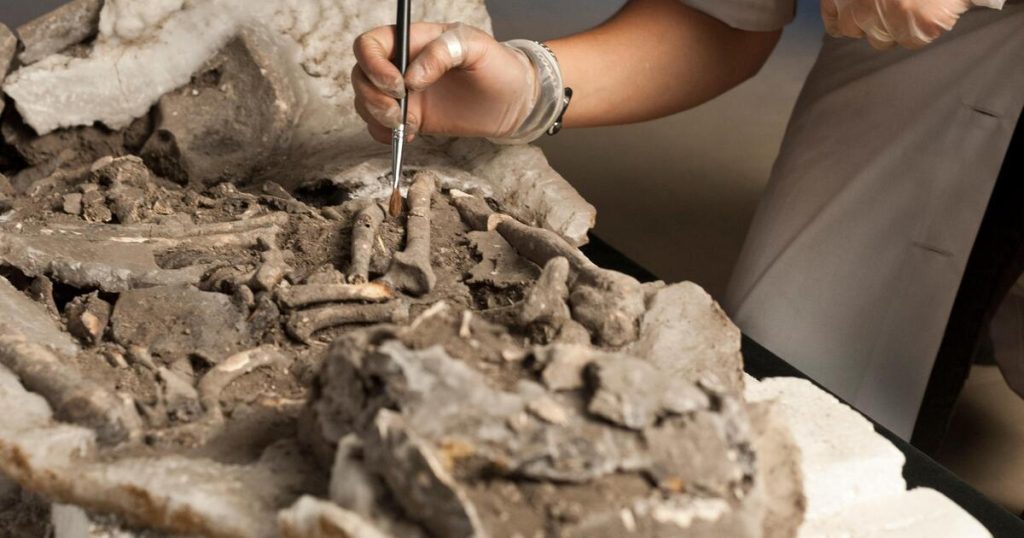Updated on 03/08/2022 at 09:25
- The oldest known mummies are about 7,000 years old and are from Chile.
- However, scientists have now found evidence that people may have embalmed their dead 8000 years ago.
Most people associate mummies with elaborately prepared bones from ancient Egypt. indeed Bodies have been preserved in many parts of the world – and perhaps much earlier than previously known: archaeologists have found evidence that hunters in the southwest of the Iberian Peninsula embalmed their dead 8000 years ago.
As they reported in the “European Journal of Archeology,” the bodies were first dried there and then buried in a special setting. For comparison: the oldest known mummies come from Chile It is about 7000 years old.
Many of the dead were buried in a very crouched position
For the study, the team led by Rita Perotio Stejerna of Uppsala University analyzed photos of 13 people whose 8,000-year-old remains were found in the Sado Valley in southern Portugal in the early 1960s.
Using the images, scientists reconstructed the sites where the dead were buried in order to learn more about the burial rituals of that time. They also relied on the results of decomposition experiments conducted on corpses and mummies at a research institute at Texas State University.
According to the team, some of the 13 dead were buried in a very bent position: their legs were bent at the knees and placed in front of their chests. Remarkably, joints were preserved even in weak joints such as the feet. The researchers wrote in the course of normal decay processes, and such bonds usually break down.
Embalming: the procedure may have simplified the process of transporting corpses
They interpret their findings as the result of a “natural, controlled embalming process.” According to this, the dead may have been dried for a long time to preserve them while squatting with ropes or bandages. Dehydration not only preserved weak joints, but also allowed the body to bend more. In addition, the procedure likely facilitated the transportation of lighter contracted cadavers.
If the team is correct, burials played a major role as early as the Mesolithic. Because the process of embalming and transporting the dead requires a lot of effort.
Read also: Researchers have revealed the secret behind Tutankhamun’s dagger after nearly 100 years
“These practices will also emphasize the importance of burial sites and the importance of bringing the dead to those sites in a way that preserves and protects the body, and that follows culturally organized principles,” the team wrote.
The conclusion needs to be supported by further analysis
However, the conclusion so far is based only on circumstantial evidence and needs to be substantiated by further analysis. Not an easy task: especially in humid climatic regions – as in much of Europe – soft tissues do not usually survive for long periods of time. Without such tissue, scientists only need to look at the bones to determine whether or not the body was preserved by mummification.
If the results of the study are confirmed, mummification of the dead will be more prevalent in prehistoric times than previously known. The artistically decorated Shinshuru mummies from the hunter-gatherer culture of the same name found in the Chilean Atacama Desert were the earliest instances of deliberate mummification.
Some of these bodies, which were buried about 7,000 years ago, still contain soft tissues. However, most mummies preserved around the world are much younger, ranging in age from a few hundred to 4,000 years. (ff/dpa)
Egyptian researchers have digitally revealed the 3,500-year-old mummy of a pharaoh. CT scans provide experts with new information.

“Total coffee aficionado. Travel buff. Music ninja. Bacon nerd. Beeraholic.”







More Stories
Researchers detect extremely high-energy gamma rays
Anxiety disorders in old age increase the risk of dementia
Researchers are particularly fascinated by these exoplanets.